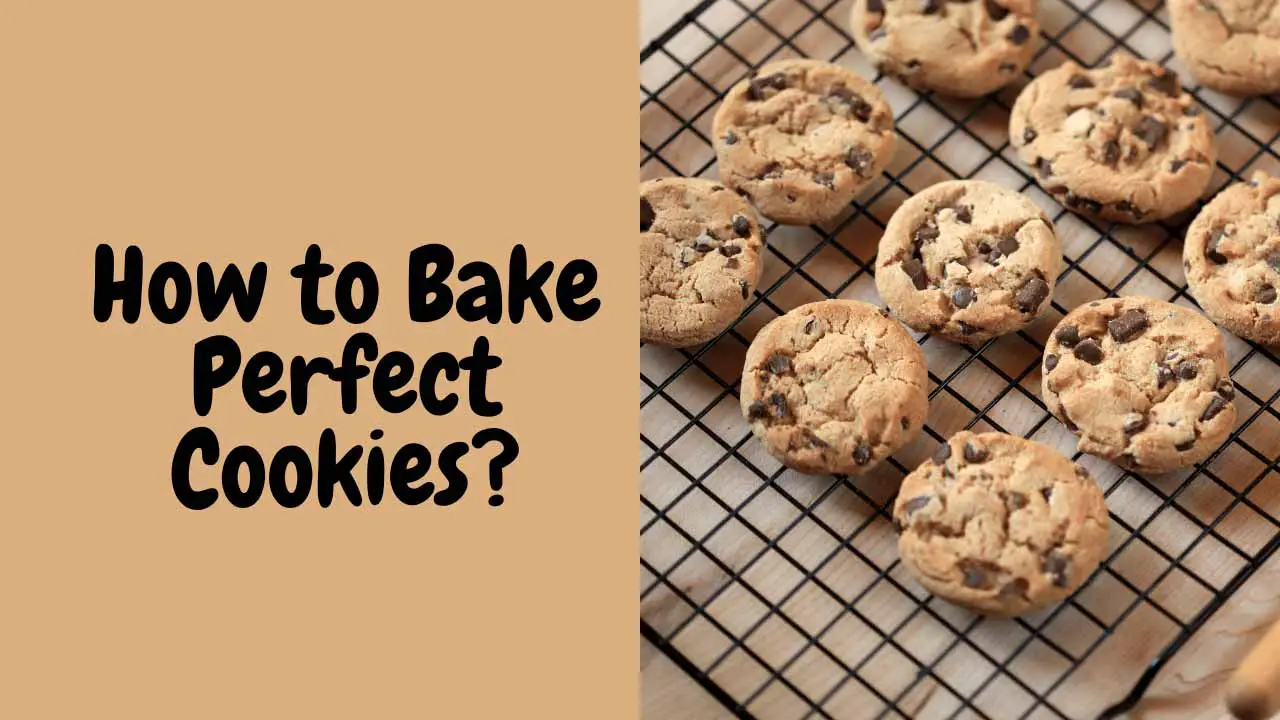Cookies, those delightful treats with a special place in our hearts, come in various shapes, sizes, and flavors.
Each type boasts unique characteristics that set them apart from the classic chocolate chip to the delicate sugar cookie. But have you ever wondered what goes into making these delectable treats?
In this article, we’ll dive into the world of cookies, exploring the role of each ingredient, the techniques that bring them to life, and even some troubleshooting tips for those inevitable baking hiccups.
Contents
- 1 The Symphony of Ingredients: Crafting the Perfect Cookie
- 2 Mastering the Techniques: From Mixing to Baking
- 3 The Precision of Measurement: A Pinch or a Cup?
- 4 Troubleshooting the Cookie Conundrums
- 5 Elevating the Classics: Exploring Variations
- 6 From Oven to Plate: Storage and Freezing
- 7 In Conclusion
- 8 FAQs
- 8.1 1: Can I substitute whole wheat flour for all-purpose flour in cookie recipes?
- 8.2 2: Can I use margarine instead of butter in my cookie recipe?
- 8.3 3: What can I use as an egg substitute for a vegan option in cookie recipes?
- 8.4 4: My cookies always turn out too flat. What am I doing wrong?
- 8.5 5: Can I freeze cookie dough for later use?
The Symphony of Ingredients: Crafting the Perfect Cookie
Behind every delicious cookie lies a carefully orchestrated ensemble of ingredients, each playing a crucial role in the final product’s flavor, texture, and appearance. Let’s take a closer look at the starring cast:
Flour – Building the Foundation
Flour is the cornerstone of any cookie recipe. It provides structure through its protein content, allowing the dough to hold its shape during baking. The type of flour used can impact the texture of the cookie.
All-purpose flour strikes a balance, producing cookies with a tender crumb, while bread flour lends a chewier texture. Gluten-free alternatives like almond or coconut flour cater to dietary needs without compromising taste.
Sugar – Sweetness and Beyond
Sugar is more than just a source of sweetness; it contributes to the cookie’s tenderness, color, and even its ability to spread during baking.
Granulated white sugar is a common choice for most recipes, while brown sugar adds moisture and hints of caramel flavor. Powdered sugar finds its place in delicate confections, offering a velvety texture.
Butter – The Key to Richness
Butter is the superstar that brings richness and moisture to cookies. Creaming butter with sugar creates aeration, resulting in a softer texture.
The temperature of the butter during mixing plays a pivotal role – softened butter yields a chewier outcome, while melted butter leads to thinner, crispier cookies.
Also read: Can Cooker Chicken Recipes
Eggs – Binding and Moisture
Eggs are the binding agent that holds all other ingredients together. They add moisture and structure, ensuring the dough doesn’t crumble apart.
When beaten into the dough one at a time, eggs help emulsify the mixture, leading to a uniform texture.
Leavening Agents – Rising to the Occasion
Leavening agents like baking powder and baking soda introduce air into the dough, causing it to rise during baking.
Baking powder results in a more cake-like texture, while baking soda, combined with an acidic ingredient like brown sugar, contributes to a chewier and darker cookie.
Mastering the Techniques: From Mixing to Baking
Creating the perfect batch of cookies requires both quality ingredients and a mastery of techniques that harmonize those ingredients. Here’s a glimpse into the art of cookie-making:
Creaming Method – Butter and Sugar Unite
The creaming method beats softened butter and sugar together until light and fluffy. This process incorporates air into the mixture, creating a tender and soft cookie. It’s a foundational step for many classic recipes like chocolate chip cookies.
Incorporating Eggs – One at a Time
When adding eggs to the mixture, do so one at a time, mixing well after each addition. This gradual incorporation prevents the batter from curdling and ensures a consistent texture.
Chilling the Dough – The Patience Factor
Chilling the dough before baking is a game-changer. It solidifies the fat in the dough, resulting in cookies that spread less in the oven. This is particularly important for recipes with high-fat content, as it prevents cookies from turning into thin, greasy disks.
The Oven Dance – Time and Temperature
The baking temperature and time can make or break your cookies. Generally, a higher temperature (around 375°F or 190°C) yields crispier cookies, while a lower temperature (around 350°F or 175°C) produces softer ones. Keep an eye on your cookies, as baking times may vary depending on your oven’s quirks.
Also read: Macaroni and Cheese Recipe
The Precision of Measurement: A Pinch or a Cup?
Imagine this: you’re preparing a batch of your favorite cookies and are instructed to add a pinch of salt. How much is a pinch, exactly?
While cooking often allows for a dash of intuition, baking demands precision. Even a slight variation in ingredient quantities can significantly impact the outcome. Using measuring cups and spoons ensures consistency and reproducibility.
Troubleshooting the Cookie Conundrums
Even the most seasoned bakers encounter challenges in their pursuit of cookie perfection. Let’s address some common baking issues and their remedies:
Dry and Crumbly Cookies
Dry cookies often result from overmixing the dough or using too much flour. To counteract this, reduce the flour slightly or add more fat (butter or oil) to the dough. Additionally, consider adding an extra egg yolk for moisture.
Flat and Spread-Out Cookies
You should chill the dough before baking if your cookies are spread into thin disks. This solidifies the fat, preventing excessive spreading. Using parchment paper or silicone baking mats can also help maintain cookie shape.
Tough and Hard Cookies
Tough cookies could be due to overworking the dough or overbaking. Mix the ingredients until combined, and aim for a slightly undercooked center when baking. The cookies will continue to set as they cool.
Elevating the Classics: Exploring Variations
The beauty of cookie recipes lies in their versatility. You can transform a basic recipe into a personalized masterpiece with a little imagination. Consider these variations:
Chocolate Galore
Experiment with different types of chocolate – dark, milk, white, or even flavored chocolates like mint or orange-infused chocolate. For texture, you can add chocolate chunks, chips, or even cocoa nibs.
Nutty Delights
Nuts lend a delightful crunch to cookies. Whether walnuts, almonds, pecans, or macadamias, incorporating nuts adds richness and depth to your treats.
Fruity Infusions
Dried fruits like raisins, cranberries, apricots, or cherries introduce a burst of sweetness and a chewy texture. They’re particularly complementary to oat-based cookies.
Spices and Zests
Cinnamon, nutmeg, or cardamom can elevate your cookies with warm and comforting flavors. Citrus zests, on the other hand, provide a refreshing twist.
From Oven to Plate: Storage and Freezing
Once your cookies emerge from the oven, their journey is far from over. Proper storage ensures they retain their freshness and flavor:
Room Temperature Storage
Most cookies can be stored at room temperature in an airtight container for several days. For optimal texture retention, consider placing a slice of bread in the container – the cookies will absorb moisture, staying soft and delicious.
Freezing for Future Indulgences
To extend the lifespan of your cookies, freeze them! Place cooled cookies in a single layer on a baking sheet and freeze until solid. Then, transfer them to an airtight container or resealable freezer bag. Frozen cookies can be enjoyed for up to a month.
In Conclusion
Baking cookies is a delightful blend of artistry and science. Each ingredient, technique, and variation contribute to the symphony of flavors and textures that dance on our taste buds.
With a keen understanding of the roles each ingredient plays, a mastery of baking techniques, and a touch of creativity, you can whip up batches of cookies that are not only delicious but also a reflection of your culinary prowess.
So, gather your mixing bowls, preheat your oven, and embark on a journey to cookie perfection – one batch at a time.
FAQs
Absolutely! Whole wheat flour can be substituted for all-purpose flour in cookie recipes, but there are a few things to remember. Whole wheat flour has a higher fiber content and can result in slightly denser cookies. To make the swap, use a 1:1 ratio, but be prepared for a nuttier flavor and a coarser texture.
While butter is often preferred for its rich flavor, margarine can be used as a substitute in cookie recipes. However, there are a few things to consider. Margarine contains more water and less fat than butter, which can affect the texture of the cookies. Cookies made with margarine may spread more and be slightly less flavorful.
Several egg substitutes can be used for a vegan-friendly cookie recipe. Some common options include mashed bananas, unsweetened applesauce, yogurt, or commercial egg replacers. These substitutes add moisture and binding properties similar to eggs. You can replace one egg with a quarter cup of your chosen substitute.
Cookies spreading too much during baking can be due to a few factors. Firstly, ensure you’re using the correct amount of fat in your recipe – too much butter or margarine can lead to excessive spreading. Chilling the dough before baking can help solidify the fat and prevent excessive spreading.
Absolutely! Freezing cookie dough is a great way to have freshly baked cookies whenever you want. To freeze cookie dough, shape it into individual cookie portions and place them on a baking sheet lined with parchment paper. Freeze until solid, then transfer the portions to a resealable freezer bag.









